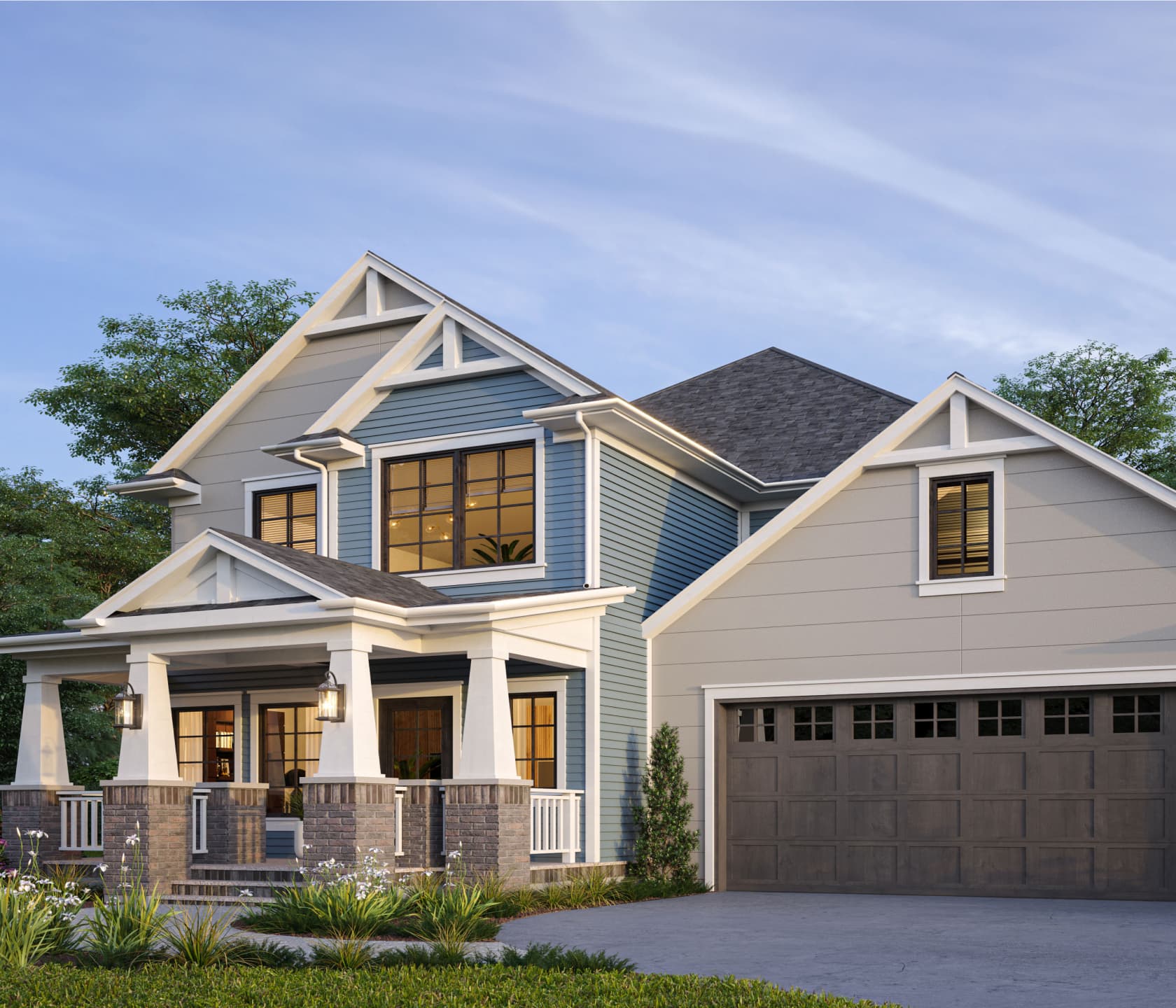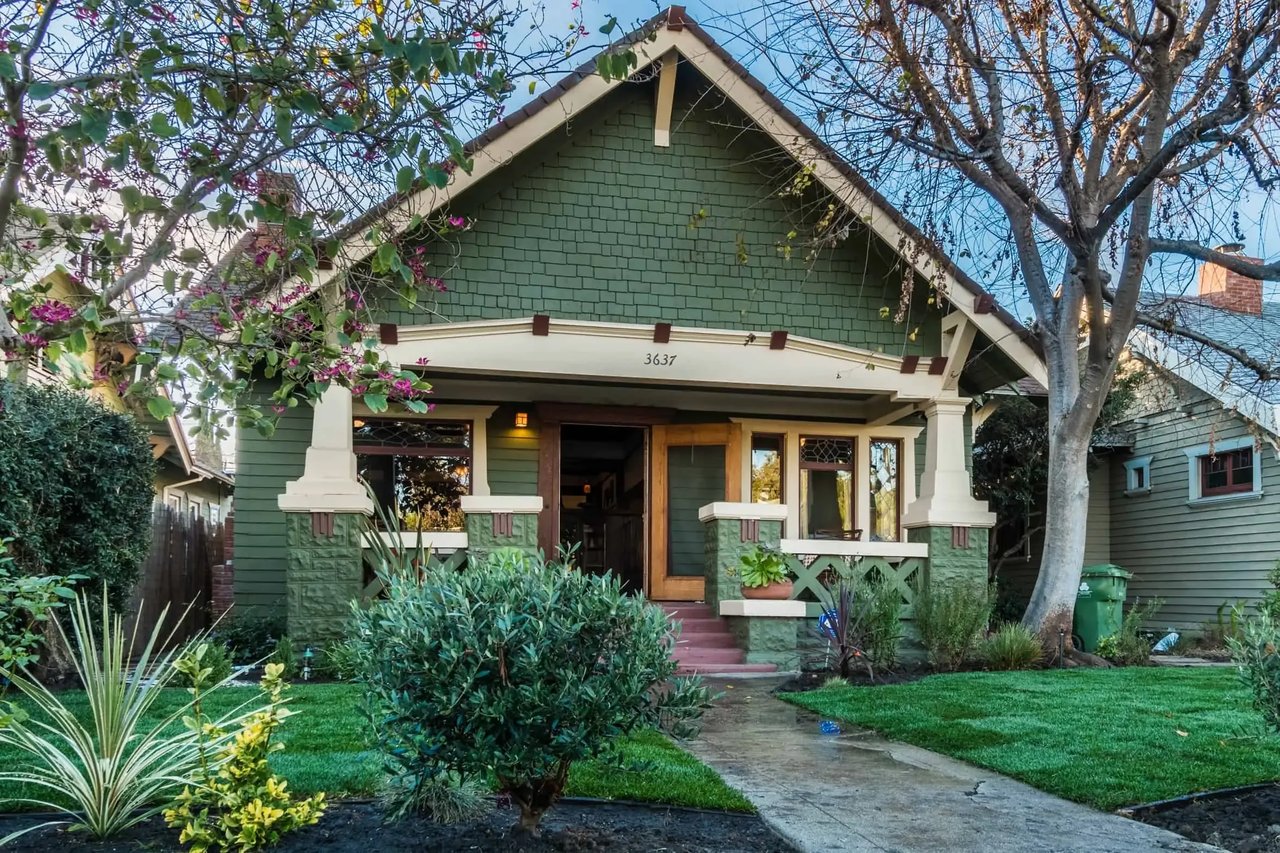Looking Into the Sustainability Features of a craftsman style house
Wiki Article
The Function of Arts & & Crafts Architects in Elevating Architectural Services in Residential Layout
Arts and Crafts architects substantially affect property style with their dedication to craftsmanship and sustainability. They focus on handmade details and natural products, which boost both looks and community identification. By involving customers in the design procedure, these architects produce unique living areas that reverberate with individual preferences. This method questions regarding the future trajectory of property architecture and its potential influence on neighborhood characteristics. craftsman style house. What lies in advance for this timeless design ideology?
The Concepts of Arts and Crafts Architecture
The essence of Arts and Crafts architecture depends on its commitment to workmanship and simpleness. This building movement emerged in the late 19th century as an action to industrialization, highlighting the worth of handcrafted information and natural products. The principles of Arts and Crafts architecture prioritize performance and harmony with the atmosphere. Structures normally feature low-pitched roofings, large eaves, and revealed rafters, promoting a feeling of unity with nature.Artisans played a substantial function in this style, frequently integrating attractive aspects like stained glass, floor tiles, and woodwork, which reflect local craftsmanship. The shade palette has a tendency to be earthy and controlled, permitting structures to mix perfectly into their surroundings. Furthermore, the style encourages open layout and public rooms, promoting a feeling of togetherness. Overall, the concepts of Arts and Crafts architecture celebrate the beauty of simpleness and the importance of human link to both nature and community.

Sustainable Practices in Residential Style
While the need for eco accountable living continues to grow, sustainable methods in domestic style have acquired considerable traction amongst architects and homeowners alike. Architects are progressively incorporating energy-efficient modern technologies and lasting products into their layouts, intending to minimize carbon footprints and boost power conservation. Strategies such as easy solar style, environment-friendly roofings, and rain harvesting systems are ending up being basic components of contemporary household architecture.Additionally, the selection of locally sourced products reduces transportation exhausts and sustains local economic situations. Focus on all-natural light and air flow not only boosts interior air top quality yet also decreases reliance on synthetic illumination and climate control systems. These lasting practices mirror a dedication to maintaining the setting while giving home owners with comfy, effective space. As understanding of environmental concerns expands, the assimilation of sustainability in household layout is poised to become a specifying attribute of contemporary architecture, assisted by the principles developed by Arts and Crafts architects.
Customization and Customization in Home Design
Customization and customization in home design have actually emerged as essential fads in action to the growing need for distinct living settings that reflect private preferences and way of lives. Homeowners progressively seek to customize spaces that resonate with their individual identities, leading to a more meaningful connection with their space. craftsman style house. This motion check my reference urges architects to engage clients in the style procedure, cultivating partnership that guarantees the last result embodies the home owner's visionAspects such as bespoke designs, custom-made materials, and tailored finishes enable a diverse variety of expressions in household layout. Arts and Crafts architects play an essential role in this advancement, highlighting workmanship and high quality. Their concentrate on incorporating imaginative aspects with performance warranties that each home is not just cosmetically pleasing however likewise distinctly fit to the residents' needs. This emphasis on personalization improves the total property experience, producing spaces that are both personal and long-lasting.
The Impact of Arts and Crafts Architects on Neighborhood Aesthetics
As communities advance, the impact of Arts and Crafts architects significantly forms their visual landscape. By stressing handmade details, all-natural products, and standard building and construction strategies, these architects develop homes that resonate with their environments. Their styles often include regional vegetations, appearances, and shades, promoting a feeling of harmony in between developed atmospheres and nature.Additionally, the Arts and Crafts movement advertises area identification through architectural continuity. By urging home owners to embrace comparable design principles, neighborhoods establish a natural personality that improves visual charm. This architectural harmony not only enhances the aesthetic experience but also infuses a feeling of pride among residents.
Moreover, the focus on sustainability and craftsmanship in Arts and Crafts architecture aligns with modern-day worths, making these styles appropriate in contemporary settings. Inevitably, Arts and Crafts architects contribute significantly to the overall charm and cultural honesty of neighborhoods, leaving a lasting effect on their visual heritage.

Future Fads in Arts and Crafts Architecture
With an enhancing emphasis on sustainability and personalization, future Recommended Site trends in Arts and Crafts architecture are poised to blend traditional craftsmanship with modern-day development - craftsman style house. Architects are most likely to focus on environmentally friendly products, utilizing redeemed wood and all-natural stone to boost the sustainability of domestic styles. The combination of smart home modern technology will certainly become commonplace, enabling customized living experiences without compromising aesthetic honestyMoreover, the resurgence of artisanal strategies will certainly promote a restored recognition for handcrafted elements, such as bespoke cabinetry and custom-made tile work. Future designs may also mirror a focus on community-oriented spaces, motivating communication and link amongst residents. Outdoor living locations will obtain importance, seamlessly integrating nature right into the home environment. As Arts and Crafts architecture evolves, it will continue to honor its origins while adapting to contemporary requirements, developing harmonious spaces that show private values and lifestyles.
Frequently Asked Questions
What Inspired the Arts and Crafts Movement in Architecture?
The Arts and Crafts movement in architecture was inspired by a response against industrialization, emphasizing handmade high quality, all-natural materials, and a return to traditional workmanship, intending to produce unified, practical spaces that celebrated artistry and uniqueness.Just how Do Arts and Crafts Architects Collaborate With Clients?
Arts and crafts architects collaborate with customers via open discussion, focusing on individual requirements and looks. They stress look what i found workmanship and sustainability, fostering a collaboration that incorporates the customer's vision with the designer's know-how in layout and materials.What Materials Are Commonly Used in Arts and Crafts Houses?
Common materials in Arts and Crafts homes consist of all-natural timber, stone, and brick, emphasizing workmanship and organic appearances. These elements develop a cozy, inviting environment, mirroring the activity's commitment to quality and simpleness in style.Exactly how Do Arts and Crafts Layouts Enhance Indoor Living Rooms?
Arts and Crafts layouts improve interior home by advertising natural light, open layout, and handcrafted information. These components cultivate a warm, inviting ambience, urging a connection between residents and their settings via thoughtful, useful visual appeals.What Are Some Famous Examples of Arts and Crafts Architecture?
Famous examples of Arts and Crafts architecture include the Wager House, Greene and Greene's work of art in The golden state, and the Robie House by Frank Lloyd Wright. These structures display handcrafted information and harmony with nature, defining the movement's essence.Report this wiki page